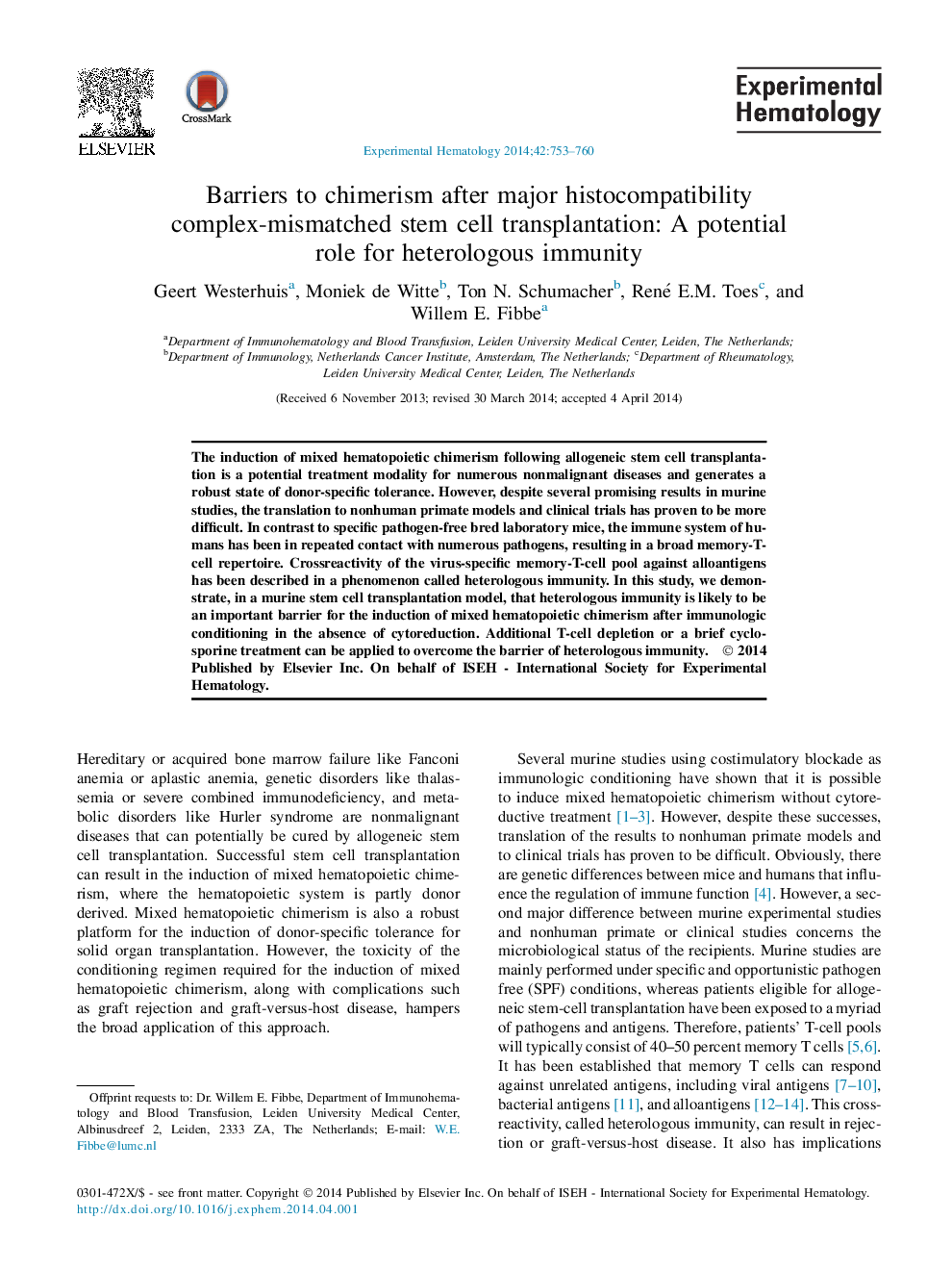| Article ID | Journal | Published Year | Pages | File Type |
|---|---|---|---|---|
| 2133401 | Experimental Hematology | 2014 | 8 Pages |
The induction of mixed hematopoietic chimerism following allogeneic stem cell transplantation is a potential treatment modality for numerous nonmalignant diseases and generates a robust state of donor-specific tolerance. However, despite several promising results in murine studies, the translation to nonhuman primate models and clinical trials has proven to be more difficult. In contrast to specific pathogen-free bred laboratory mice, the immune system of humans has been in repeated contact with numerous pathogens, resulting in a broad memory-T-cell repertoire. Crossreactivity of the virus-specific memory-T-cell pool against alloantigens has been described in a phenomenon called heterologous immunity. In this study, we demonstrate, in a murine stem cell transplantation model, that heterologous immunity is likely to be an important barrier for the induction of mixed hematopoietic chimerism after immunologic conditioning in the absence of cytoreduction. Additional T-cell depletion or a brief cyclosporine treatment can be applied to overcome the barrier of heterologous immunity.
